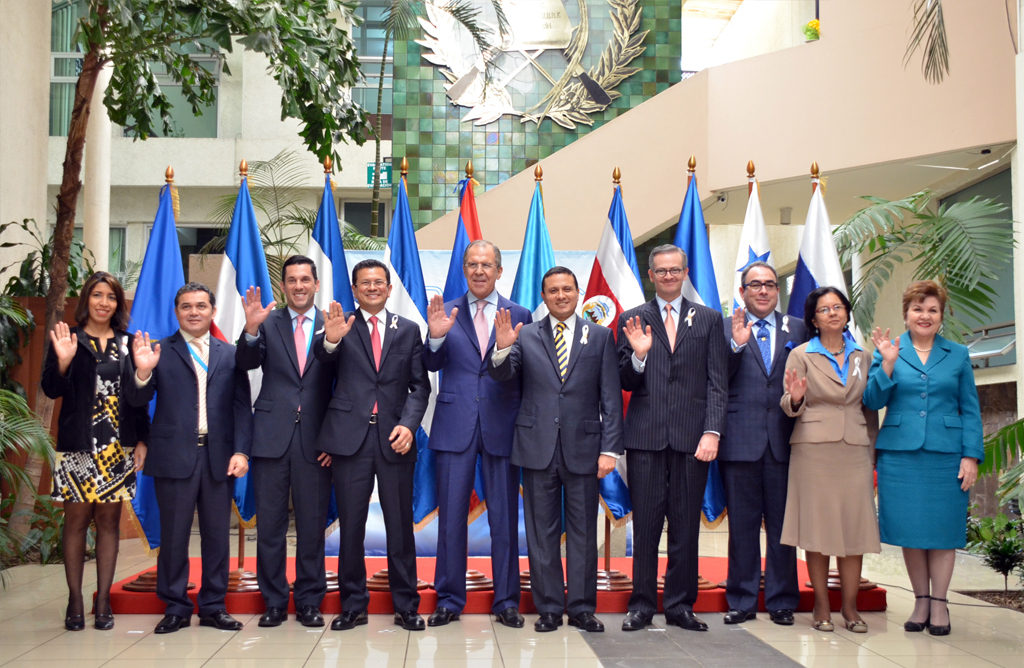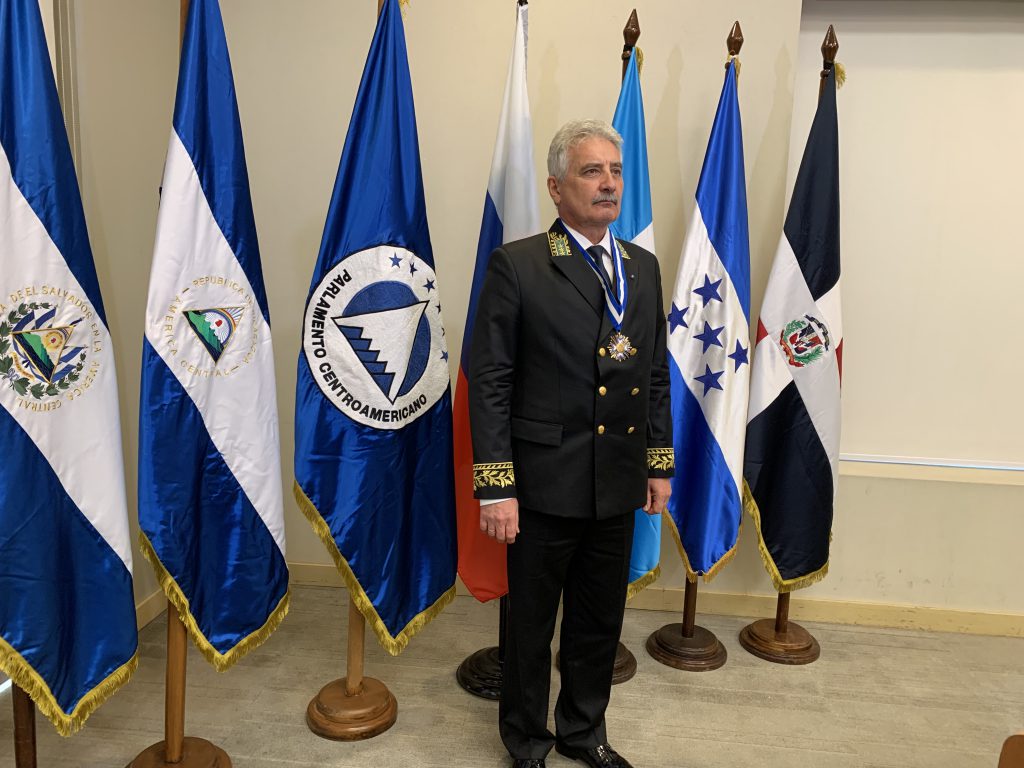The territory, located on a narrow isthmus connecting the two Americas, was once predetermined by its geographical position and common destiny to become a single state. However, history ordered otherwise. The once unified General Captaincy of Guatemala, and later, the unified Federal Republic of Central America, was divided into five independent states – Guatemala, Honduras, Costa Rica, Nicaragua and El Salvador, which celebrated on the same day, September 15, a holiday – Independence Day. By the memorable date, the “LACRUS” team decided to turn to the main milestones in history, as well as the interaction of the countries of the Central American region with Russia.
In 1821, 200 years ago, under the influence of the gaining momentum of the liberation movement in the Spanish colonies of the American continent, the “Act of Independence of Central America” was signed, which entered into force on September 15. On this day, Guatemala, Honduras, Costa Rica, Nicaragua and El Salvador took a decisive step towards sovereignty.
Today, despite the existing difficulties and new international challenges and threats, this region has been able to develop a sustainable model of political and socio-economic development. The potential of joint work to protect regional borders is quite obvious, as well as the desire to find ways to solve collective problems.
For Russia, interaction with Central America is an important component of its foreign policy course in the Latin American direction. The Russian government is developing a political dialogue with countries on a wide range of issues, work is underway to strengthen the legal framework, search for ways to increase trade and economic cooperation, expand interaction in the international arena and within the leading multilateral associations of the region: the Central American Integration System (CAIS) and the Central American Parliament (PARLACEN).

The Central American Integration System (Spanish – Sistema de la Integración Centroamericana, SICA) is an economic, cultural and political union of Central American states. The region’s free trade zone was established in 1991. The eight states are full participants: Guatemala, El Salvador, Nicaragua, Honduras, Costa Rica, Panama, Belize and the Dominican Republic. First of all, the organization was created to solve the problems of economic cooperation. Nevertheless, in recent years, the association has also dealt with political issues, as well as education, culture and environmental protection.
The beginning of the political dialogue between Russia and the Central American Integration System (CAIS) was laid in 1997 within the framework of the meeting of the heads of foreign affairs ministries in San Jose (Costa Rica). Subsequently, the Russia-CAIS meetings were held at the level of foreign ministers since 1999. As a result of the negotiations, joint communiqués were adopted. This year, the Extraordinary Summit of the Heads of State of the Central American Integration System (CAIS), timed to coincide with the celebration of the 200th anniversary of independence of the Central American countries, was held in mid-September in Guatemala.
In 2004, a Memorandum of Understanding on the creation of a mechanism for political dialogue and cooperation between Russia and the CAIS countries was signed. Within the framework of this document, it is envisaged and consolidated to hold consultations on international and regional issues, issues of bilateral relations, intensify dialogue and cooperation within the UN and other international forums, support through exchanges in trade, economic, investment, technological, cultural, and humanitarian and other fields.
The Central American Parliament (Spanish – Parlamento Centroamericano, Parlacen) was created in 1991 to strengthen integration, organize dialogue and maintain peace in Central America, as well as for the development of the countries of the region. The association includes the Dominican Republic, Guatemala, Honduras, Nicaragua, Panama and El Salvador. The decisions of the parliament are of a recommendatory nature, and its structure consists of 120 deputies belonging to various parliamentary groups: The Democratic Alliance, The Parliamentary Group of the Left, Centre-Democratic Integration and Democratic Integrationist Union.
In July 2019, on the sidelines of the Second International Forum “Development of Parliamentarism” in Moscow, the State Duma Speaker Vyacheslav Volodin and the Chairman of the Central American Parliament (PARLACEN) Irma Amaya Echeverria (Spanish – Irma Segunda Amaya Echeverría) signed a cooperation agreement. This document has become a political and legal instrument on the basis of which joint activities of interest in the Central American region and the Dominican Republic will continue and expand.

Russia attaches great importance to strategic interaction with Nicaragua, one of Moscow’s key partners in Latin America and on the world stage. The two countries are successfully implementing joint projects in the field of health and space, in the field of overcoming the consequences of natural disasters, training and advanced training of personnel.
April 19 last year marked the 75th anniversary of the establishment of Russian-Guatemalan diplomatic relations. Russia, together with other countries and international organizations, has supported the settlement of the long-standing armed conflict in Guatemala. In October 2012, the Russian-Guatemalan Center for the Study of Culture, History and Written Language of the Maya named by Yuri Knorozov, who deciphered the Mayan hieroglyphs.
In August, consultations of the Deputy Foreign Ministers of Russia and Costa Rica were held in the format of a videoconference, which made it possible to “synchronize watches” on topical issues on the bilateral agenda and analyze the prospects for joint work in the “post-coronavirus” period.
September 30 marked the 30th anniversary of the establishment of diplomatic relations between Russia and Honduras. Over the years, joint efforts have laid the foundation for Russian-Honduran friendship, mutual understanding and cooperation. A significant impetus to their further development is given by the Agreement on the Basics of Relations signed in 2017.
Bilateral relations between Russia and El Salvador are actively developing. Trade with the Central American country in 2018 amounted to $ 24.3 million. Russia supplies mineral fuels and petroleum products, paper and cardboard, and imports mainly electrical equipment and coffee. Relations in the field of education and culture are developing quite actively, so since 2018 about a hundred of Salvadoran students have been enrolled in Russian universities.
Today there are great prospects for the development of cooperation between Russia and the countries of Central America in various directions. As the Russian Foreign Minister Sergey Lavrov noted in his September 15 address, bilateral “interaction in the international arena is based on a similar foreign policy philosophy, which is based on adherence to the UN Charter, respect for the sovereignty and the right of peoples to determine their own destiny”. Nevertheless, the problem of drug trafficking remains one of the main regional challenges. Three key routes for cocaine traffic from Colombia to the United States pass through the Pacific Ocean, Central America and the Caribbean. Criminal networks are trying to transfer a significant amount of smuggling precisely through the Central American territory, supplies to Europe are expanding, and this poses a certain threat to Russia.


